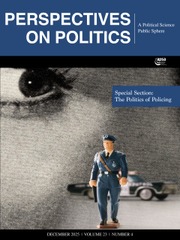The review by Anuradha Sajjanhar offers a succinct evaluation of the core arguments in my book. I am gratified that she finds the central arguments in the book compelling. She notes that the book presents a good account of the opportunities and constraints that India has faced, both internally and externally, to obtain its goal of a major power status in international politics since independence. She also notes the high quality of the work in terms of writing and argumentation. For me, the motivation for writing this book came from a realization that theories on status are much advanced in the international relations discipline today and yet there have been scant attempts to apply these theoretical insights on the Indian case. The review probably could have benefitted from an appreciation of this motivation in terms of applying status theories adequately as her main focus is on the India-centric aspects of the book. Many comparative elements of previous rising powers are discussed in this context. In fact, a criticism I raise in my review of her well-written work relates to the avoidance of discussing international aspirations of the Hindutva movement.
The criticism she makes that the book should have gone deeper into the public perceptions in key countries, especially in the neighborhood, is fairly valid. However, this would have required gaining access to public opinion data from these countries on this subject which seems nonexistent or not reliable. The elite-level strategies to balance India in both power and status terms received more focus in the book, especially in the context of the arrival of China as a serious contender to India’s dominance of South Asia and today New Delhi has to compete with Beijing in the region. Further, the smaller neighbors have acquired enough agency to bargain with both China and India for much economic aid. The domestic politics of these countries are also shaped by this contestation as political parties compete on the basis of their pro-China or pro-India positions for electoral advantages. Pakistan is an exception to this as it mounted the most consequential status challenge to India from their joint birth in 1947, although in recent years it has found itself in a less favorable position. The borrowing of status and power through alignment with the US and China helped in this process. The book addresses status contestation as a key variable in explaining India-China and India-Pakistan rivalries, an aspect that is missing in the extant literature on these subjects. The main constraint in adding more analysis is page length as I wanted a tighter and shorter book to attract readership beyond the academy.
I also believe that the book does an adequate job in addressing the challenges facing Modi’s foreign policy, especially in terms of the democratic backsliding under his rule, which has affected the legitimization of India’s status globally, especially in the liberal world as exclusivist religious nationalism has few takers as an emulative approach to state building. In an era of right-wing populism, especially in the West, some level of elite level acceptance of India has been occurring. This is largely due to India’s swing power position in the context of China’s rise and the potential to act as a possible counterweight to Chinese economic strength. I also discuss the limitations of diaspora politics as both facilitators and inhibitors to India’s status enhancement. The book concludes by arguing that India needs to offer better conceptions of world order and ideas for tackling collective global challenges rather than engage in the veto-payer role it often takes on crucial negotiations on climate change or trade liberalization.


